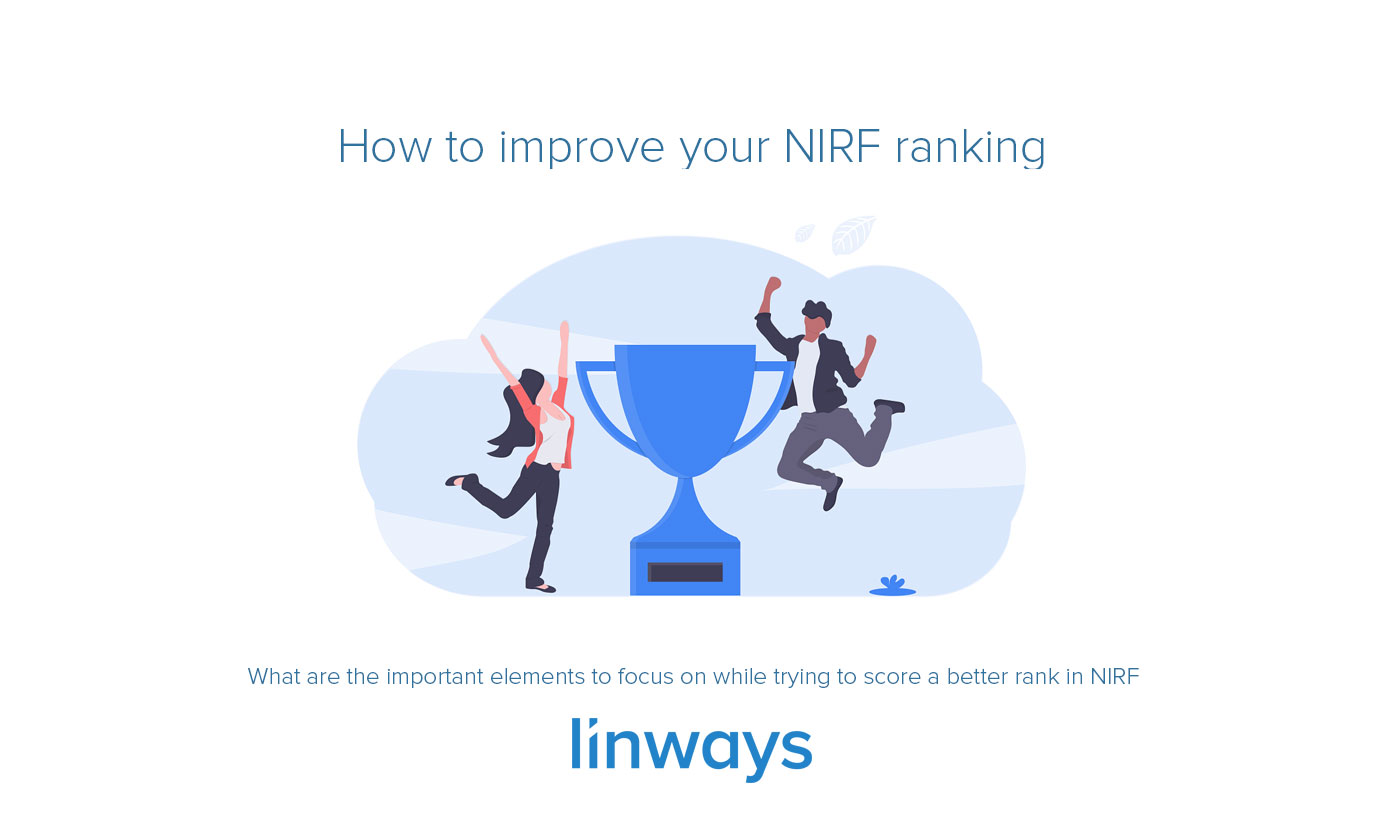What’s NIRF
The National Institutional Ranking Framework (NIRF) is an undertaking by the Ministry of Human Resource and Development (MHRD). It, as the name suggests, ranks the institutions based on a framework that includes certain criteria and methodology to assess the merits and demerits. It was launched on 29th Sep 2015.
Unlike the NBA or NAAC accreditations, which gives an absolute grade, the NIRF ranking is relative to the other institutions placed in a similar group. This is a great way for the stakeholders including the parents, teachers, students, and industry experts to assess and choose the institution they prefer. Though this may appear as a competition for better image in public, the ranking also encourages institutions to pursue more definitive procedures to keep on getting better. None other than our nation is to benefit from it.
How does it work
As far as the ranking system goes, NIRF has made its fare share of controversies among the institutions. Some claim to be ranked lower than they should have been. However, as they themselves put it, the NIRF rank is not absolute. It is merely an indicator that shows how well the institution has fared since the past year in contrast with the rest of the institutions in their group.
Their methodology for ranking includes assessing applicants in terms of certain previously set criteria, quality assurance practices, current state of the institution as in affiliated or autonomous etc. and survey.
Based on these assessments and the data the has been submitted to them, the institution will be placed in a certain category. These categories are; institutions which are primarily engaged in teaching (Category B), and institutes engaged in both research and teaching (Category A). The data can be submitted by the institution or taken from third-party sources. Once the data is received, the institution will be invited to check out the data. If the Institution does not give any comments or feedback within a specified period on the displayed data, NIRF will assume that the data is accurate, and proceed with it.
Since we have already published a few blogs on these topics, you can refer those for more details.
How to improve your NIRF ranking
First of all, as we mentioned earlier, the nirf ranks based on merit inside a particular group of institutions. These ranks are not national or in retrospect with the rest of the institutions across India. Its just to show how well the institution have fared in the previous year with reference to the rest of them in the same category.
So to improve your ranking, you should have to figure out which group your institution falls to in the first place. To elaborate, category A would comprise of institutions of national importance set up by an act of Parliament, state universities, deemed-to-be-universities, private universities, other autonomous colleges etc. Category B institutions, on the other hand, are affiliated to a university and do not enjoy full academic autonomy. An autonomous college, however, which is engaged primarily in teaching, may also opt for being ranked in Category B.
Once that part is figured out, your institution can prepare for quality assurance practices to match the assessment standards and previous ranking records. This includes nurturing faculty research, efficiently implementing outcome based education, improving teaching-learning practices and student satisfaction surveys, etc. these are just a few which goes into the broader range of assessment parameters, which is the next crucial element.
Learn about the ranking parameters of the NIRF to improve your institution’s ranking. The parameters include
- Teaching, Learning and Resources,
- Research and Professional Practices,
- Graduation Outcomes,
- Outreach and Inclusivity,
- Perception.
We have already explained each of these in depth in our previous blogs on NIRF and you can refer those to learn more about each of these. Quite frankly, most of these are mere indicators of quality assurance in a general perspective, and is not exclusive to NIRF. As far as your institution is committed to quality and is enthusiastic to take steps towards ensuring it, your ranking is bound to improve. You can also read more about the NIRF ranking parameters and it’s ranking frameworks in our previous blogs which you can find below. Please leave your thoughts and opinions about the NIRF ranking and it’s parameters in the comments. We would also really appreciate sharing any insights of your own to improve NIRF ranking other than what we’ve discussed above.





